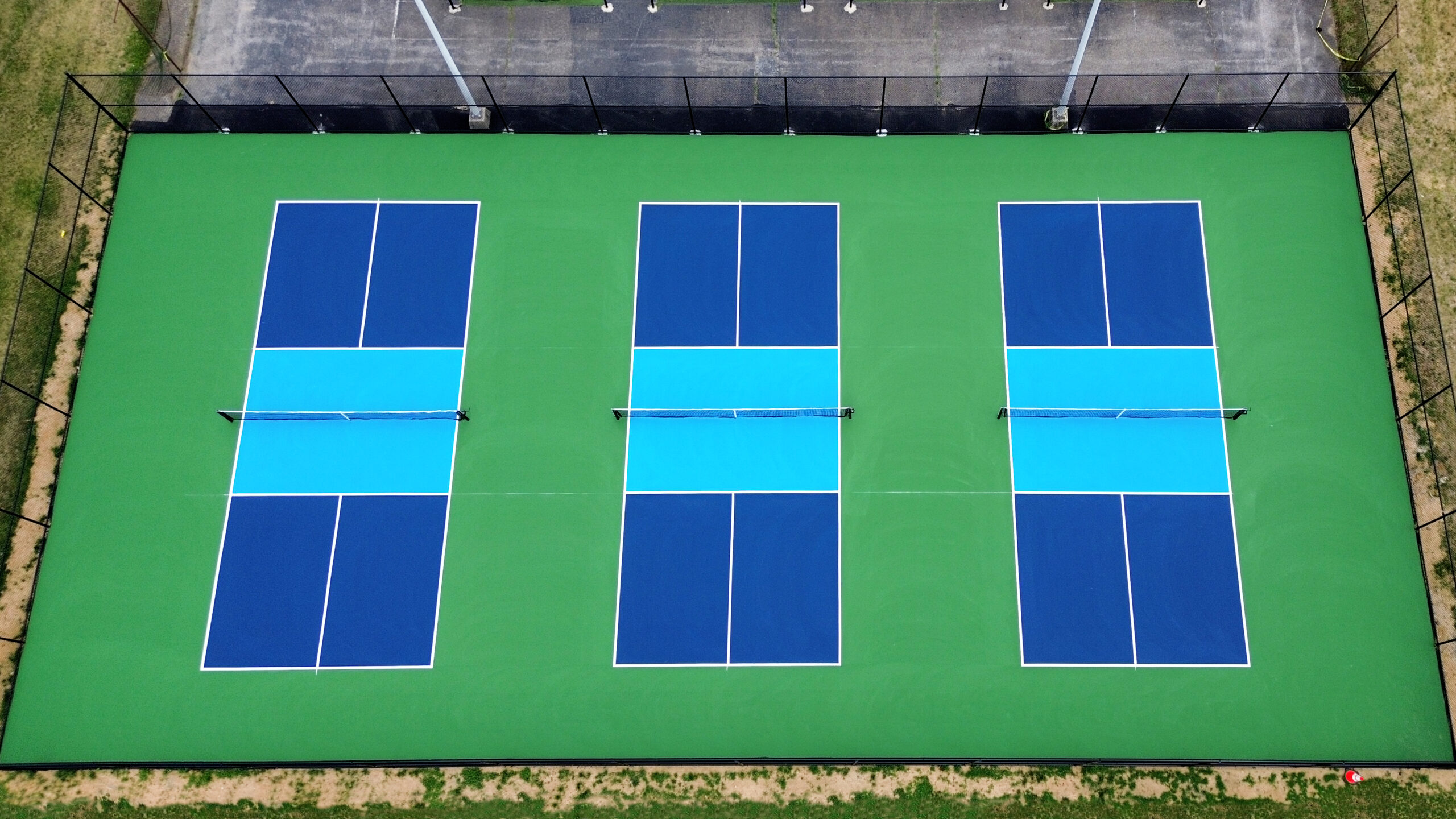Sustainable Practices in Pickleball Court Construction You Should Know
As the appeal of pickleball proceeds to climb, so also does the requirement for lasting methods in court construction. This technique not only addresses environmental worries however likewise improves the longevity and capability of the courts. From picking green materials to carrying out efficient drainage and energy-saving lighting remedies, there are various methods to take into consideration. Yet, the influence of these practices prolongs much beyond the court itself. Comprehending how each aspect adds to a more lasting future invites better exploration into the detailed balance in between leisure development and environmental stewardship.
Selecting Eco-Friendly Products
Selecting environmentally friendly materials is a crucial step in the building and construction of sustainable pickleball courts. The option of sustainable products not just lessens ecological effect yet additionally improves the longevity and performance of the court. Secret products consist of reused rubber for the surface area, which supplies exceptional longevity and shock absorption while diverting waste from land fills.
Additionally, using locally sourced products lowers transport emissions and supports regional economies. Pickleball court construction. Using indigenous hardwoods for secure fencing and seating can offer a lasting aesthetic while making sure durability against the elements.
Incorporating absorptive materials for court foundations can better add to sustainability by permitting for natural water drainage and lowering overflow. These options not just safeguard neighborhood ecological communities but likewise advertise much healthier play environments.
Reliable Water Drainage Solutions
While the selection of eco-friendly materials is crucial, executing effective water drainage options is similarly essential for keeping lasting pickleball courts. Correct water drainage not only safeguards the court surface from water damages yet also minimizes erosion and drainage, advertising environmental integrity.
Effective drainage systems can include absorptive paving, which permits water to penetrate the ground instead of pooling externally. This reduces the likelihood of standing water, which can lead to mold and mildew and various other maintenance concerns. Furthermore, integrating strategically positioned water drainage channels and swales can direct excess water away from the court area, ensuring a completely dry playing surface area and stopping soil disintegration.
Using native plants in the landscaping around the courts can better improve drain by absorbing excess water and lowering overflow. These plants call for less irrigation and advertise biodiversity, lining up with sustainable practices.
Moreover, it is crucial to consistently preserve the water drainage system to ensure its lasting effectiveness. This includes clearing up particles and monitoring for obstructions. By focusing on reliable drainage services, pickleball court producers can considerably add to the sustainability and long life of the facility, ultimately profiting both gamers and the atmosphere.
Energy-Efficient Illumination Options
As the need for pickleball remains to expand, integrating energy-efficient illumination options into court design has ended up being significantly important for sustainability. Standard illumination systems typically eat too much energy, adding to greater functional prices and environmental effect. As a result, embracing modern, energy-efficient technologies is essential for both brand-new buildings and remodellings.
LED (Light Emitting Diode) lights sticks out as a premier selection as a result of its longevity and energy savings (Pickleball court construction). Contrasted to standard illumination, LEDs make use of around 75% much less energy and can last approximately 25 times longer, significantly lowering maintenance prices. Additionally, the directional nature of LED lights lessens light pollution, making sure that lighting is concentrated on the court as opposed to surrounding locations.

Lasting Surface Area Alternatives
Exploring sustainable surface options for pickleball courts has actually gotten grip amongst builders and gamers alike. The focus on green products not just lines up with the growing environmental awareness but also boosts the efficiency and durability of the courts.
One popular alternative is the use of recycled rubber, which can be sourced from utilized tires. This material offers outstanding shock absorption, decreasing the danger of injuries for players while advertising sustainability. Additionally, modular tiles made from recycled plastics supply an additional feasible option. These tiles are simple to replace and set up, and their flexibility her response enables different court configurations.
All-natural turf courts are likewise becoming a lasting selection, advertising biodiversity and reducing the warm island effect. Nevertheless, they need routine maintenance and water, which may not line up with all sustainability objectives.

Water Preservation Methods

An additional effective method involves the installation of rain harvesting systems. These systems accumulate and keep rainwater for use in keeping court surfaces and landscaping. This strategy not just conserves drinkable water yet also minimizes reliance on metropolitan sources.
Furthermore, utilizing drought-resistant landscape design around the courts is important. Native plants need much less water and are better adapted to regional environment problems, hence lowering total water consumption. Additionally, using reliable watering systems, such as drip watering, ensures that water is delivered directly to plant roots, minimizing evaporation and waste.
Verdict
Including lasting methods in pickleball court building dramatically adds to ecological conservation and resource effectiveness. Using environment-friendly products, carrying out efficient drainage solutions, and taking on energy-efficient lights choices can considerably decrease ecological effect. Discovering sustainable surface area alternatives and using water conservation strategies improve the total sustainability of these recreational centers. By focusing on these methods, the building and construction see here now of pickleball courts can line up with broader ecological objectives while promoting durability and capability within communities.
As the popularity of pickleball continues to increase, so too does the requirement for sustainable methods in court building.Selecting eco-friendly materials is a vital action in the building of sustainable pickleball courts. By prioritizing energy-efficient lighting alternatives, pickleball court constructors can add to a much more lasting future while fulfilling the requirements of players and stakeholders alike.Including lasting surface area alternatives not just improves the efficiency of pickleball courts however also leads the method for implementing reliable water conservation techniques.Including sustainable techniques in pickleball court building significantly adds to environmental conservation and resource performance.